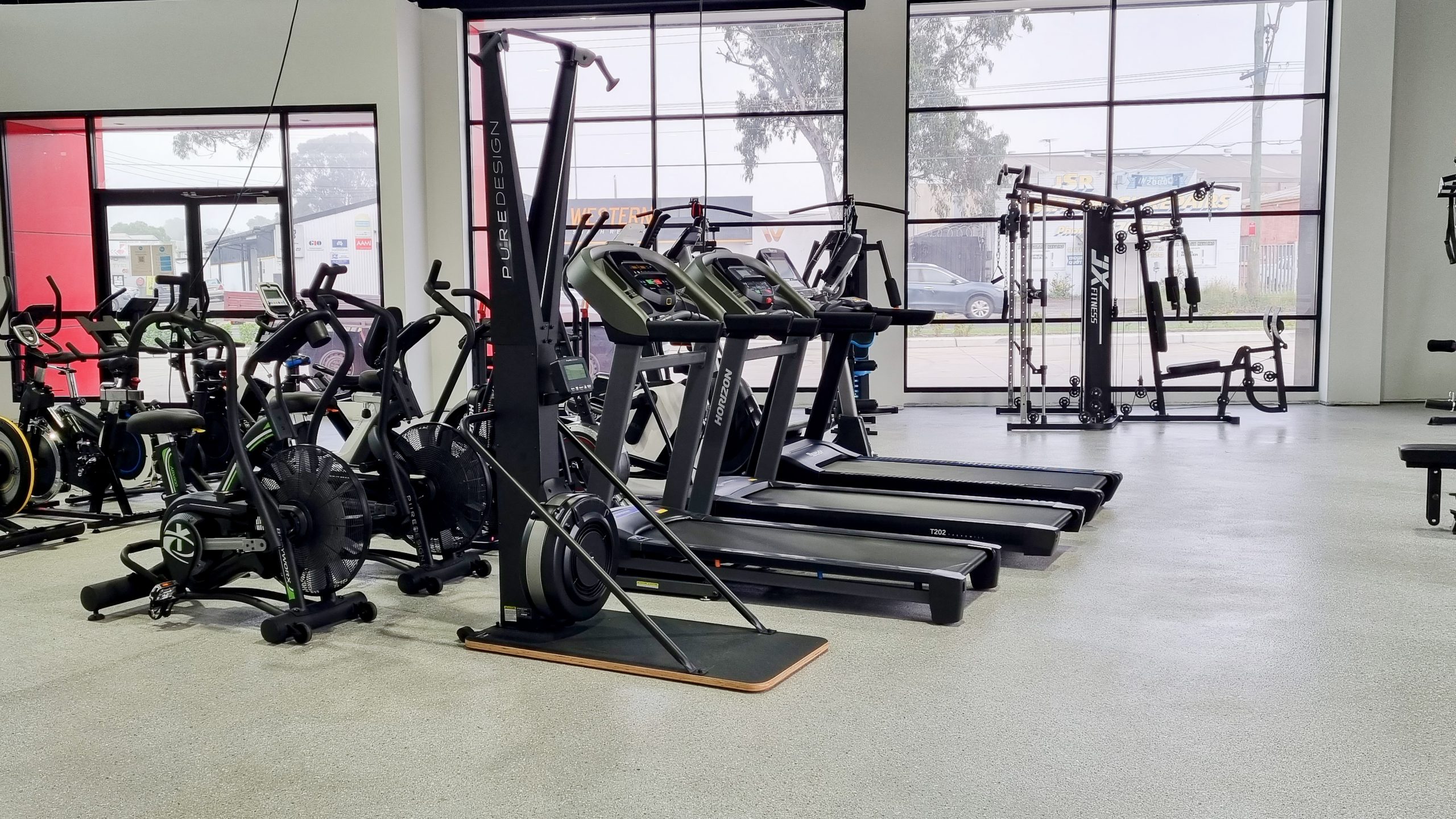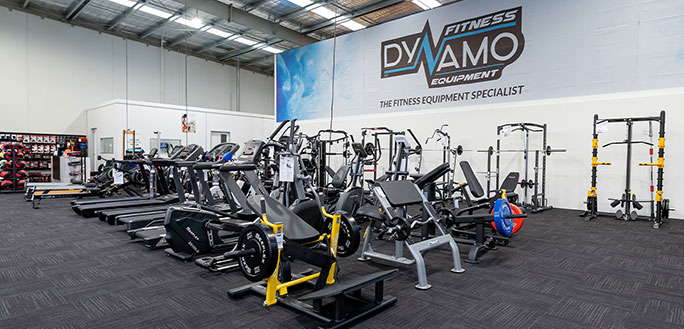
What is a SkiErg Machine & How to Use a Ski Machine for Great Low-Impact Cardio Workouts
Low-impact cardio workouts are a game-changer for fitness enthusiasts. They protect your joints, improve endurance, and burn calories efficiently. Among the best tools for this is the ski machine, a versatile cardio equipment. So, the question is; how to use a ski machine the proper way?
Ski machines mimic cross-country skiing, engaging your arms, legs, and core. They deliver a full-body workout without stressing your joints. Whether you’re a beginner or a seasoned athlete, a ski machine adapts to your fitness level.
In this blog, we’ll explore what a ski machine is, its types, and why it’s perfect for low-impact cardio. Let’s dive in and learn how this equipment can elevate your fitness routine.
What Is a Ski Machine?
A ski machine is a cardio tool that mimics the motion of cross-country skiing. It combines upper and lower body movements for a full-body workout. The machine uses resistance to challenge your muscles and improve endurance.
The design includes two handles and foot platforms. You pull the handles with your arms while pushing with your legs. This coordinated motion activates multiple muscle groups, making the exercise effective.
Types of Ski Machines
Ski machines come in a few variations, each suited to different preferences:
- Air-Resistance Ski Machines
These rely on airflow to create resistance. The harder you pull, the more challenging it gets. They offer smooth, natural movements. - Magnetic Ski Machines
Magnetic models allow you to set specific resistance levels. They are quieter and better for controlled workouts. - Hybrid Ski Machines
A mix of air and magnetic resistance. They provide flexibility and consistent performance.
Each type supports low-impact cardio while offering unique benefits. Consider your fitness goals when choosing a ski machine gym.
Benefits of Using a Ski Machine
Ski machines are more than just cardio equipment. They bring a host of benefits:
- Full-Body Workout
They engage your arms, legs, back, and core. Every movement strengthens multiple muscle groups. - Low-Impact Exercise
The smooth motion reduces stress on your knees and joints. It’s ideal for people of all fitness levels. - Cardiovascular Endurance
Regular use improves your heart health and lung capacity. You build stamina with every session. - Efficient Calorie Burn
Ski machines torch calories quickly. They’re perfect for weight loss and maintaining fitness.
How to Set Up Your SkiErg Machine
Choose the Right Location
Pick a spot with enough space to move freely. The machine needs clearance around it for safe use. Avoid placing it near walls or furniture to prevent accidental collisions. Ensure the floor is level to keep the machine stable during workouts.
Good lighting helps you see the console and adjust settings easily. Ventilation is important too. A well-aired room keeps you cool as you exercise.
Adjust the Machine
Start by setting the resistance level. Since the machine operates with a flywheel, you have a lot of control over the resistance and intensity. Beginners should opt for a lower setting to focus on form and avoid strain. Advanced users can increase the resistance for a more intense workout. Adjust the foot platforms if needed for comfort.
Make sure the handles move smoothly. Test the machine before starting to ensure it operates correctly. Proper adjustments improve safety and help you maximize the benefits of your workout.
Underst the Console
The console tracks key workout metrics. Familiarize yourself with the display. Most consoles show calories burned, time elapsed, distance covered, and stroke rate.
Use the settings to customize your session. You can set goals for time, distance, or calories. Some machines also offer preset programs for interval training or endurance.
Check the pause button location before you begin. This lets you stop the workout quickly if needed. Learning the console features ensures you stay focused and motivated.
Proper Technique on How to Use a Ski Machine for Low-Impact Fitness Workouts

Starting Position
Stand tall with your feet shoulder-width apart on the foot platforms. Place them firmly in the center to keep your balance. Hold the handles with a relaxed yet secure grip. Avoid squeezing too hard, as it can strain your wrists.
Align your body naturally. Keep your back straight and your head up. This posture prevents unnecessary tension and ensures efficient movement on Nordic skiing machine.
Executing the Movement
During the initial pull or start, your traps, triceps, lats, and calves are the primary movers. These are supported by the core, glutes, hip flexors, quadriceps, and hamstrings. Most ski machines simulate cross-country skiing rather than downhill skiing. Follow these steps to perform the skiing motion:
- Pull the handles downward with your arms.
- From your fully extended position, flex your core and bend forward a little while slightly hinge your hips back and slightly bent your knees.
- Push through your legs to move the foot platforms backward.
- Keep the motion smooth and controlled.
- Return the handles to the starting position.
- Let your arms guide the movement without locking your elbows.
- Repeat the motion rhythmically.
- Focus on coordinating your arms and legs for a fluid motion.
Take your time to learn the rhythm. Start slow and increase speed as you gain confidence.
Common Mistakes to Avoid
- Hunching Over: Keep your back straight to avoid discomfort and maintain efficiency.
- Using Just Arms or Legs: Engage both for a full-body ski machine workout at home gym.
- Jerky Movements: Smooth, consistent motions prevent strain and improve results.
- Skipping Warm-Up: Begin with a few light pulls to prepare your lower and upper body.
Correcting these mistakes ensures a safer and more effective workout.
Breathing Techniques
Breathe deeply and steadily during your workout. Inhale as you pull the handles down. Exhale as you return to the starting position. This pattern supports your rhythm and keeps your energy levels steady.
Avoid shallow breathing. Full breaths improve oxygen flow and boost endurance. Practice controlled breathing until it feels natural. Proper technique keeps you focused and helps you power through the session.
Designing Your Low-Impact Cardio Workout
Warm-Up Routine
Start with light movements to prepare your body. Do arm swings, leg kicks, or a brisk walk for 3–5 minutes. This increases blood flow and warms up your muscles. Follow it with a few gentle strokes on the cardio machine to get used to the motion.
A proper warm-up reduces the risk of injury and improves performance. Never skip this step.
Workout Structure
Beginner Routine
- Duration: 10–15 minutes.
- Intensity: Use low resistance and focus on smooth movements.
- Goal: Build stamina and learn proper form.
Intermediate Routine
- Duration: 20–30 minutes.
- Intensity: Use moderate resistance. Maintain a steady pace with short bursts of higher effort.
- Goal: Increase endurance and burn more calories.
Incorporating Intervals and Steady-State Sessions
Alternate between high and low effort for interval training. For example:
- 30 seconds of intense pulling.
- 90 seconds of slow recovery.
Repeat for 10–20 minutes.
For steady-state sessions, maintain a consistent pace throughout. These sessions build endurance and are easier to sustain.
Cool-Down and Muscle Stretching
Slow down gradually to get your heart rate to return to normal. Perform gentle strokes and rounds for 3–5 minutes at low intensity. Afterward, stretch your arms, legs, and back. Focus on the muscles you used during the workout.
Stretches improve flexibility and reduce soreness. Spend 5–10 minutes on this step to aid recovery.
Tips for Maximizing Your Ski Trainer Workout
- Stick to a regular schedule. Aim for 3–5 sessions per week. Gradually increase your workout duration or resistance as your fitness improves. Small, steady progress leads to better results over time.
- Pay attention to how you feel during and after exercise. Stop if you feel sharp pain or dizziness. Rest if you experience muscle fatigue or soreness. Avoid overtraining, as it can cause injuries and hinder progress.
- Enhance your results with complementary workouts. Consider these options:
- Strength Training: Build muscle with dumbbells or resistance bands.
- Yoga or Pilates: Improve flexibility and core strength.
- Walking or Cycling: Add variety to your cardio routine.
Is a Ski Machine Suitable for Weight Loss?
Yes, it is. A ski machine burns calories efficiently while engaging multiple muscle groups. It combines cardio and strength, making it ideal for shedding excess weight. Pair it with a healthy diet for the best results.
How Often Should I Use the Ski Machine for Optimal Results?
Start with 3–4 sessions per week. Each session can last 20–30 minutes. As you progress, increase the duration or intensity based on your fitness goals. Consistency is key to achieving noticeable improvements.
Can I Use the Ski Machine If I Have Joint Issues?
Absolutely. The ski machine offers a low-impact workout that reduces stress on joints. It’s a safe option for individuals with knee or hip concerns. Consult a doctor if you’re unsure about starting a new fitness routine.
Conclusion
A ski machine is an excellent tool for a low-impact cardio workout. It improves cardiovascular health, burns calories, and strengthens your entire body. Its adaptability makes it suitable for beginners and advanced users alike.
Explore our wide range of gym equipment online including water rowing machines, ProForm treadmills, squat machines, and rowers, or visit our mega showrooms.
Gym Equipment Melbourne Stores
Gym Equipment Sydney Store
Gym Equipment Adelaide Store
& Gym Equipment Perth Stores
Contact us for expert advice. Our knowledgeable team is ready to help you find the perfect equipment for your fitness journey. Start today and take the first step toward a healthier lifestyle!
